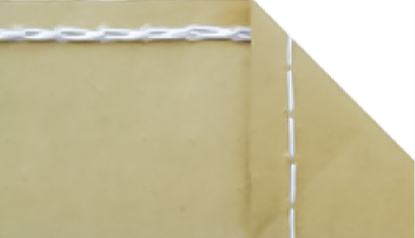lifting sling sewing machine
The Importance of Lifting Sling Sewing Machines in Industrial Applications
In the realm of industrial manufacturing, the efficiency and reliability of machinery can significantly influence productivity and safety. One such crucial equipment is the lifting sling sewing machine, which plays an essential role in the production of lifting slings utilized in various industries, including construction, logistics, and maritime. Understanding the function, advantages, and technology behind these machines provides insight into their importance in modern production processes.
What are Lifting Slings?
Lifting slings are critical tools designed to lift and move heavy loads safely and efficiently. Made from durable materials such as polyester, nylon, or specialized fibers, they come in various configurations and capacities tailored to specific applications. The ability to stitch these slings with precision and strength is vital, as the integrity of the sling directly affects the safety of operations involving heavy lifting.
The Role of Lifting Sling Sewing Machines
Lifting sling sewing machines are specially designed to create and reinforce the seams of lifting slings. These machines are capable of stitching tough, heavy-duty fabrics that standard sewing machines cannot handle. They employ advanced technology to ensure the seams are not only visually appealing but also possess the necessary strength to withstand the rigors of heavy lifting.
The machines are equipped with features such as high-speed sewing capabilities, strong stitching patterns (such as zigzag or lock stitch), and specialized presser feet to accommodate bulky materials. Furthermore, many models incorporate automatic threading and cutting systems, reducing manual labor and increasing operational efficiency.
Advantages of Using Lifting Sling Sewing Machines
1. Enhanced Strength and Durability One of the primary advantages of using lifting sling sewing machines is the ability to produce slings with superior strength. The reinforced stitches can withstand higher loads, reducing the risk of sling failure during operation.
lifting sling sewing machine

2. Increased Production Speed With high-speed sewing capabilities, these machines can significantly increase production rates. Manufacturers can produce slings more quickly, meeting the demands of industries that require rapid turnaround times.
3. Versatility Many lifting sling sewing machines can accommodate various fabric types and sizes. This versatility allows manufacturers to produce a wide range of lifting slings, from small slings for minor lifting tasks to large, heavy-duty slings designed for extensive industrial applications.
4. Precision and Consistency Automated features in modern machines ensure that each stitch is placed accurately and consistently, leading to high-quality products that meet strict safety standards. This precision is crucial in industries where even minor defects can lead to catastrophic failures.
5. Cost Efficiency Although the initial investment in a lifting sling sewing machine may be higher than standard sewing equipment, the long-term savings from increased production efficiency, reduced material waste, and enhanced product reliability can justify the expense.
Technological Advancements
The innovation in lifting sling sewing machines does not stop at basic functionality. Recent advancements have seen the introduction of computer numerical control (CNC) systems, allowing for intricate designs and automatic adjustments based on the fabric type being sewn. Additionally, many modern machines are designed with user-friendly interfaces, simplifying operation and maintenance.
Conclusion
Lifting sling sewing machines are indispensable in the manufacturing of lifting slings. Their ability to produce strong, durable, and precise products enhances the safety and efficiency of lifting operations across various industries. As technology continues to evolve, these sewing machines will likely see further advancements, leading to even greater improvements in productivity and safety standards. Investing in such machines is essential for any manufacturer looking to excel in the demanding field of heavy lifting equipment production.
-
Boost Production Efficiency with a Pattern Sewing MachineNewsAug.29,2025
-
Industrial Excellence with the Best Heavy Duty Sewing MachineNewsAug.29,2025
-
Precision and Power with the Best Pattern Sewing MachineNewsAug.29,2025
-
Reliable Bulk Packaging Starts With the Right FIBC Sewing MachineNewsAug.29,2025
-
Advanced Packaging Solutions: Elevate Productivity with Jumbo Bag Sewing Machine and Industrial Stitching EquipmentNewsAug.29,2025
-
High-Performance Solutions for Bulk Packaging: FIBC Sewing Machine and MoreNewsAug.29,2025
-
Maximize Efficiency with an Industrial Cylinder Arm Sewing MachineNewsAug.28,2025


























